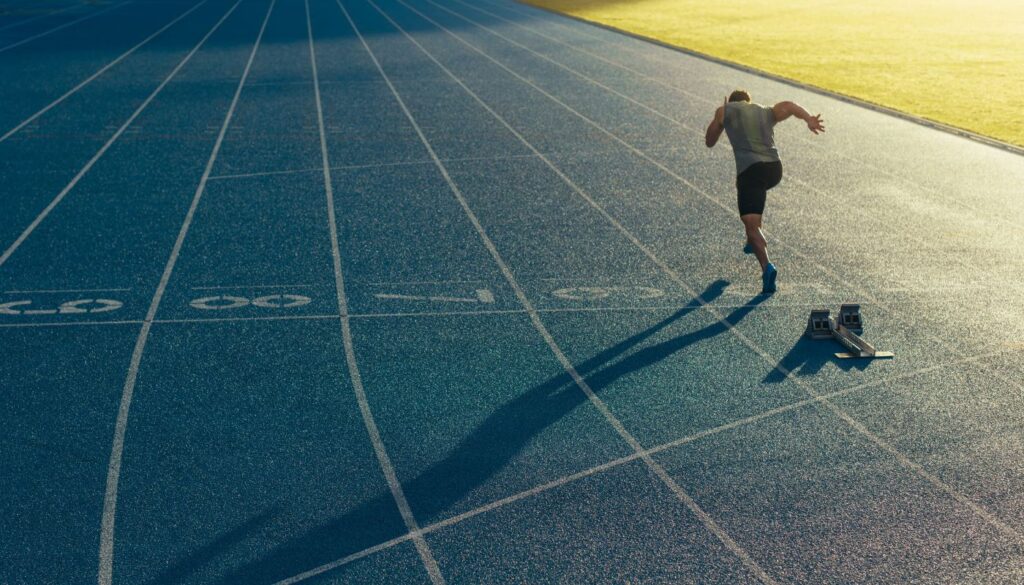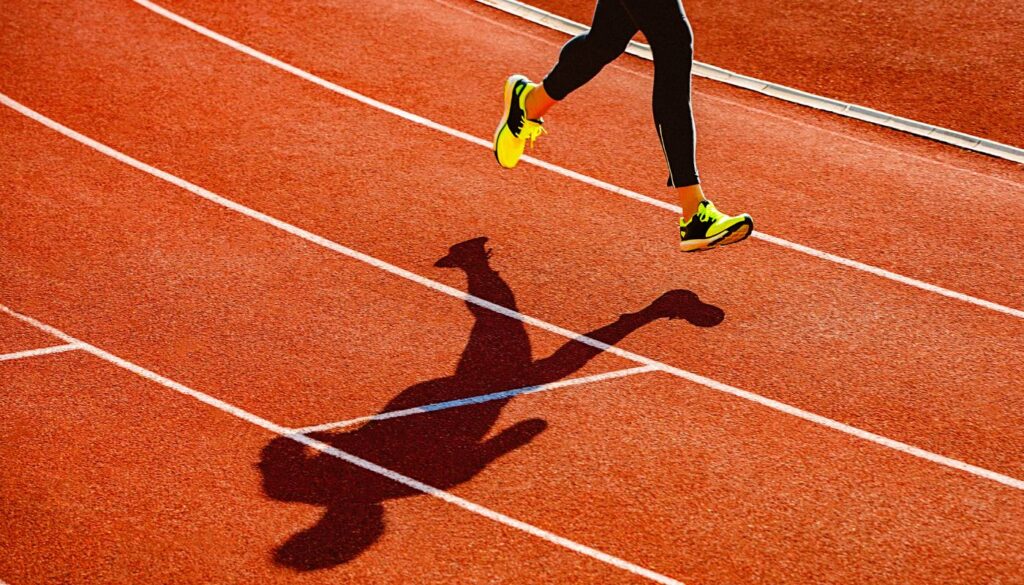Curious about how your 100m sprint time stacks up against others in your age group? Whether you’re a seasoned athlete or a casual runner, understanding the average 100m time by age can offer fascinating insights into your performance and how it compares on a broader scale. This exploration delves into the dynamics of speed, age, and athletic development, providing a compelling overview that might just challenge your perceptions and inspire your next personal best. Join us as we break down the averages and what they signify for runners of all ages.
Understanding Average 100m Times
The quest to understand the average 100m sprint times across different age groups is not only fascinating but also provides insights into the dynamics of human speed and fitness levels. Typically, the 100m dash is a sprint race in athletics with a powerful global appeal, showcasing the pinnacle of human speed. The average times for this race can vary significantly depending on a variety of factors including age, training, gender, and underlying physical conditions.
For young athletes, particularly those in their late teens to early twenties, peak performance in sprinting can be achieved, thanks to the optimal blend of muscle strength, flexibility, and endurance. As individuals age, a natural decline in these attributes can lead to slower sprint times, although consistent training and a healthy lifestyle can mitigate some of these effects. It’s crucial to note that these times are averages, meaning that exceptional athletes can perform significantly better, and conversely, those new to the sport or with less training might find these times challenging to meet.
A comprehensive understanding of these average times can serve as a benchmark for athletes aiming to gauge their performance against a broader spectrum. It also offers valuable insights for coaches in tailoring training programs that are age-appropriate, ensuring athletes develop at a pace that aligns with their physiological capabilities and long-term aspirations in the sport of athletics.
| Age Group | Average Men’s Time (seconds) | Average Women’s Time (seconds) |
|---|---|---|
| 18-25 | 10.5 – 12.5 | 12.0 – 14.0 |
| 26-35 | 11.0 – 13.0 | 12.5 – 14.5 |
| 36-45 | 11.5 – 13.5 | 13.0 – 15.0 |
| 46-55 | 12.0 – 14.0 | 13.5 – 15.5 |
| 56+ | 12.5 – 14.5 | 14.0 – 16.0 |
Unveiling the Pace: Decoding the Average 100m Sprint Time Across Different Ages

The 100m dash, often heralded as the pinnacle of speed and agility, offers a fascinating glimpse into human performance across varying age groups. While professional athletes push the boundaries of what’s humanly possible, the average times recorded by amateurs provide a more relatable benchmark for the general population. Understanding these times can be crucial for both aspiring sprinters and fitness enthusiasts aiming to gauge their performance against a broader spectrum.
For children under the age of 10, the focus is less on competitive times and more on developing coordination and basic athletic skills. However, as individuals enter their teenage years, a significant drop in average times can be observed, thanks to physiological changes and increased training intensity. Teenagers can often clock times between 13 to 14 seconds after dedicated practice. The age group of 18 to 30 years old represents the peak performance phase for many, with well-trained athletes capable of achieving times under 12 seconds. This period is characterized by optimal muscle strength and cardiovascular efficiency, allowing for impressive displays of speed.
Interestingly, the sprinting prowess doesn’t plummet immediately after the 30s. Athletes in their late 30s to early 40s can still post commendable times, often under 13 seconds, especially if they maintain a consistent training regimen. However, it’s beyond this point that the natural decline in muscle mass and flexibility starts to impact performance more noticeably. Yet, many sprinters continue to enjoy the sport recreationally, focusing on personal goals and health benefits rather than competitive times.
Additional Insights: The Impact of Training and Nutrition
- Consistent training is key to improvement at any age.
- Nutrition plays a critical role in muscle recovery and overall performance.
- Flexibility training can extend an athlete’s peak performance years.
- Mastering the correct sprinting technique is as crucial as physical strength.
- Mental resilience is often the unsung hero of athletic progress.
Factors Influencing Running Speed
Understanding the multifaceted aspects that impact running speed can help athletes of all levels optimize their performance. While innate talent and genetics play a crucial role, factors such as training, age, and physical condition also significantly influence one’s ability to sprint. Moreover, the type of surface one runs on and the quality of footwear can either propel an athlete forward or hinder their pace. Recognizing and adapting to these elements can lead to substantial improvements in running speed.
Training methods are paramount in enhancing speed. A regimen that incorporates both strength training and sprint drills can improve muscle power and running mechanics, respectively. Age is another critical factor; generally, individuals are at their peak speed in their late teens and early twenties, with a gradual decline thereafter. However, with proper training, runners can maintain impressive speeds well into their forties and beyond.
Physical condition, including body weight and muscle composition, significantly impacts running speed. Runners with a higher proportion of fast-twitch muscle fibers tend to be faster over short distances. The running surface and footwear play a pivotal role as well. A supportive and responsive shoe on a track designed for racing can make a noticeable difference in sprint times compared to running on a soft or uneven surface with inadequate shoes.
- Genetics and innate talent
- Training methods and regimen
- Age and its impact on performance
- Physical condition and muscle composition
- Running surface and quality of footwear
Deep Dive: The Science of Speed
To further understand running speed, examining the underlying science offers valuable insights. Biomechanics, the study of the mechanical laws relating to the movement or structure of living organisms, plays a significant role. By analyzing stride length, frequency, and foot strike, athletes can make adjustments to optimize efficiency and speed. The interplay between aerobic capacity and anaerobic power also dictates how fast and how long a runner can maintain high speeds. Developing both through targeted training can lead to breakthroughs in performance.
Further Perspectives: Optimizing Running Economy
Running economy, defined as the energy demand for a given velocity of submaximal running, is a critical factor in performance. Improvements in running economy can be achieved through various means such as strength training, optimizing running form, and even altitude training. Each runner has unique biomechanical and physiological characteristics, suggesting that a personalized approach to training and technique adjustment is essential for maximizing speed and efficiency.
Average Times by Age Group
Understanding the average 100m sprint times across different age groups can offer insight into how speed varies with age. It’s important to note that these averages are influenced by factors such as training, health, and genetics, making them broad estimates rather than strict benchmarks.
For children and teenagers, speed tends to increase with age. Boys and girls aged 10-11 often record times around 15 to 16 seconds. As they grow into adolescence, improvements in strength and coordination can significantly reduce these times. Teenagers aged 16-17 can often sprint 100m in 11.5 to 13 seconds, showcasing the rapid development during these years.
Adults exhibit a wider range of average times due to varying levels of fitness and commitment to training. Competitive amateur athletes, often in their late teens to early 30s, can clock times from 10.5 to 12 seconds. For recreational runners, a good target is between 12 to 14 seconds. Beyond the age of 35, sprint times tend to increase, reflecting the natural decline in muscle mass and flexibility. Masters athletes, aged 40 and above, might aim for times under 13 seconds, with the understanding that every individual’s potential varies.
- Children (10-11 years): 15-16 seconds
- Teenagers (16-17 years): 11.5-13 seconds
- Competitive Amateurs (18-30 years): 10.5-12 seconds
- Recreational Runners (18-35 years): 12-14 seconds
- Masters Athletes (40+ years): Under 13 seconds
Training Tips for Faster Sprints
Improving your sprint speed is not only about how much you run but also about how you train. Whether you’re a competitive athlete looking to shave seconds off your 100m dash or someone just aiming to improve their overall fitness, incorporating specific training strategies can significantly enhance your sprinting capabilities.
First and foremost, strength training is pivotal. It’s a common misconception that to run faster, one should only focus on running. However, building muscle strength, particularly in your legs and core, can greatly improve your explosive power off the line and your stride efficiency. Exercises like squats, deadlifts, and lunges should be staples in your training regimen.
Another crucial aspect is technical refinement. Sprinting is as much about technique as it is about raw power. Working on your starting blocks position, optimizing your stride length and frequency, and improving your arm swing can all lead to better times. It’s beneficial to occasionally train with a coach who can provide feedback on your form and suggest adjustments.
Lastly, don’t underestimate the power of recovery. High-intensity sprint training puts a significant strain on your body, and without proper rest and recovery, you risk overtraining and injury. Ensure you’re getting enough sleep, eating a balanced diet rich in nutrients, and incorporating active recovery days into your schedule.
Incorporating these elements into your training regimen requires a balance. It’s essential to gradually increase the intensity and volume of your workouts to prevent injury while consistently working on all aspects of your speed — strength, technique, and recovery.
| Training Focus | Key Exercises/Practices | Frequency per Week |
|---|---|---|
| Strength Training | Squats, Deadlifts, Lunges | 2-3 |
| Technique Improvement | Starting Blocks, Stride Optimization | 2-3 |
| Speed Workouts | 60m-100m Sprints, Hill Sprints | 2 |
| Recovery | Rest Days, Active Recovery | 2-3 |
| Nutrition & Sleep | High-Protein Diet, 7-9 Hours of Sleep | Daily |
Remember, improving your sprint speed is a marathon, not a sprint. It takes time, dedication, and a well-rounded training approach to see significant improvements. By focusing on strength, technique, and recovery, you’re setting yourself up for success on the track.
Comparing Professional and Amateur Times

The world of track and field is as diverse as it is competitive, with a marked difference between professional and amateur athletes, especially in the 100 meters. This sprint, often dubbed the fastest event in athletics, showcases a wide range of times that depend greatly on the level of training, experience, and natural ability of the athletes. Professional sprinters, who dedicate their lives to refining their technique and enhancing their physical condition, consistently achieve times that are the envy of the amateur world. On the other hand, amateur athletes, though often highly committed, typically juggle training with other life commitments, influencing their overall performance.
Professional athletes, for example, can clock times under 10 seconds, a feat that remains a distant dream for many amateurs. The current world record, held by Usain Bolt at 9.58 seconds, is a testament to the peak of human speed, while most amateur sprinters might never break the 12-second barrier. This discrepancy highlights not only the talent and dedication of professional athletes but also the significant impact of advanced training methods and technology in shaving critical milliseconds off a sprinter’s time.
However, it’s important to recognize the achievements of amateur sprinters, who often train without access to elite coaching or facilities. Their passion for the sport and commitment to personal improvement embodies the true spirit of athletics. The table below offers a snapshot comparison of average 100m times across different ages and levels of competition.
| Age Group | Professional Average Time (seconds) | Amateur Average Time (seconds) |
|---|---|---|
| 18-25 | 9.85 – 10.2 | 10.5 – 12.0 |
| 26-35 | 9.95 – 10.3 | 10.8 – 12.5 |
| 36-45 | 10.1 – 10.5 | 11.0 – 13.0 |
| 46-55 | 10.5 – 11.0 | 11.5 – 13.5 |
| 56+ | 11.0 – 12.0 | 12.0 – 14.0 |
The Role of Diet and Nutrition
A sprinter’s diet and nutrition play a crucial role in their performance on the track. The right balance of nutrients can provide the energy needed for the explosive power required in the 100m dash, while also aiding in recovery and injury prevention. Carbohydrates are essential for fueling short, intense efforts, whereas proteins are vital for muscle repair and growth. However, it’s not just about these macronutrients; micronutrients like vitamins and minerals are equally important for overall health and peak physical conditioning.
To optimize performance, athletes should focus on a diet rich in whole foods, avoiding processed items that can lead to inflammation and decreased performance. Hydration is another key aspect, with water playing a pivotal role in nearly every bodily function, including nutrient transport and muscle function.
- Lean proteins for muscle repair.
- Complex carbohydrates for sustained energy.
- Healthy fats for inflammation reduction and energy.
- A wide variety of fruits and vegetables for vitamins and minerals.
- Adequate hydration to support metabolic functions and recovery.
Incorporating these nutritional strategies not only supports an athlete’s training needs but also enhances overall well-being. Diet and nutrition should be tailored to the individual, considering factors like age, weight, training intensity, and personal health goals. Consulting with a sports nutritionist can provide tailored advice to help athletes reach their full potential.
As we conclude, it’s clear that diet and nutrition are foundational elements in any athlete’s performance arsenal. Not only do they fuel the body for peak performance, but they also support recovery and long-term health. An optimized diet, rich in nutrients and tailored to individual needs, can be the difference between good and great on the track. For athletes looking to shave seconds off their 100m time, ignoring the role of diet and nutrition is not an option.

Shares expert tips, training plans, and motivational insights to help runners of all levels achieve their goals. When he’s not hitting the pavement or coaching others, he enjoys exploring new trails and participating in local races. Miles believes in the power of community and regularly engages with fellow runners to promote a healthy and active lifestyle. His mission is to inspire others to embrace the joy of running and reach their

